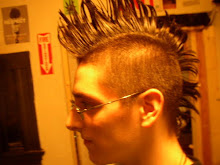Organ Systems 1
The integumentary system is the integrity of the body. It is the skin, largest organ. Hair and nails are also fluff on the skin. Sweat glands and sebaceous glands which make oil. It protects organs, keeps out microorganisms, synthesized vitamin D, regulates body temperature and humidity.
The skeletal system contains 206 bones, cartilidge of various types, ligaments, which connect bones together, tendons, which connect muscles to bones. Skeleton protects internal organs and produces the majority of motion. Tendons must be spiral-coiled items like 3 twine stretchy ropes.
The muscular system contains skeletal muscles, attached to bone and for voluntary movement. It has smooth muscles for involuntary movement. And cardiac muscle for the heartbeat. 3 special kinds of muscle.
The nervous system has the cns -brain and cord, and pns, nerves. PNS also includes cranial nerves which supply the head, neck, face, and shoulder area, although there is one cranial nerve that supplies all our internal organs. PNS: autonomic nerves for body control breathing, temperature. Special sense organs ears eyes taste, touch smell.
The endocrine system contains ductless glands. recall that exocrine glands have a duct while endocrine systems drop it outside. The pineal, thymus, thyroid, parathyroid, adrenal, pancrease, and sex bunches.
The cardiovascular system contains the hear, arteries and veins, blood, and capillaries.
The lymphatic system contains the lymph nodes, lymphatic vesselrs, lymph, and thymus gland, and tonsils. The purpose of this system is to drain all vital nutrients from the fluids surrounding our cells and return those to the circulating blood.
The respiratory ststem has the nasal cavities, the pharynx [throat] the trachea and its subdivisions, the lungs, the respiratory diaphraghm. Divisions in the trachea are called bronchi.
The digestive system contains the oral cavity, the pharynx, the esophagus, the stomach, the small and large intesines.
The urinary systems contains the kidneys, the ureters, the bladder, and urethra. You make like 1ml of urine every minute or so.
The reproductive system contains your sexy bits. even the epididymus and bulbourethral glands.
The NONOGRAPH:
umbillical region in center. right and left hypochondriac regions. 'hypo: below chondriac:the cartilidge'. epigastric is above the stomach, and between the two hypochondriac regions. two midlateral regions: right and left lumbar regions. correspond to the lumbar region of the back. r& l inferiolateral regions. hypogastric region.
The skeletal system contains 206 bones, cartilidge of various types, ligaments, which connect bones together, tendons, which connect muscles to bones. Skeleton protects internal organs and produces the majority of motion. Tendons must be spiral-coiled items like 3 twine stretchy ropes.
The muscular system contains skeletal muscles, attached to bone and for voluntary movement. It has smooth muscles for involuntary movement. And cardiac muscle for the heartbeat. 3 special kinds of muscle.
The nervous system has the cns -brain and cord, and pns, nerves. PNS also includes cranial nerves which supply the head, neck, face, and shoulder area, although there is one cranial nerve that supplies all our internal organs. PNS: autonomic nerves for body control breathing, temperature. Special sense organs ears eyes taste, touch smell.
The endocrine system contains ductless glands. recall that exocrine glands have a duct while endocrine systems drop it outside. The pineal, thymus, thyroid, parathyroid, adrenal, pancrease, and sex bunches.
The cardiovascular system contains the hear, arteries and veins, blood, and capillaries.
The lymphatic system contains the lymph nodes, lymphatic vesselrs, lymph, and thymus gland, and tonsils. The purpose of this system is to drain all vital nutrients from the fluids surrounding our cells and return those to the circulating blood.
The respiratory ststem has the nasal cavities, the pharynx [throat] the trachea and its subdivisions, the lungs, the respiratory diaphraghm. Divisions in the trachea are called bronchi.
The digestive system contains the oral cavity, the pharynx, the esophagus, the stomach, the small and large intesines.
The urinary systems contains the kidneys, the ureters, the bladder, and urethra. You make like 1ml of urine every minute or so.
The reproductive system contains your sexy bits. even the epididymus and bulbourethral glands.
The NONOGRAPH:
umbillical region in center. right and left hypochondriac regions. 'hypo: below chondriac:the cartilidge'. epigastric is above the stomach, and between the two hypochondriac regions. two midlateral regions: right and left lumbar regions. correspond to the lumbar region of the back. r& l inferiolateral regions. hypogastric region.


0 Comments:
Post a Comment
<< Home